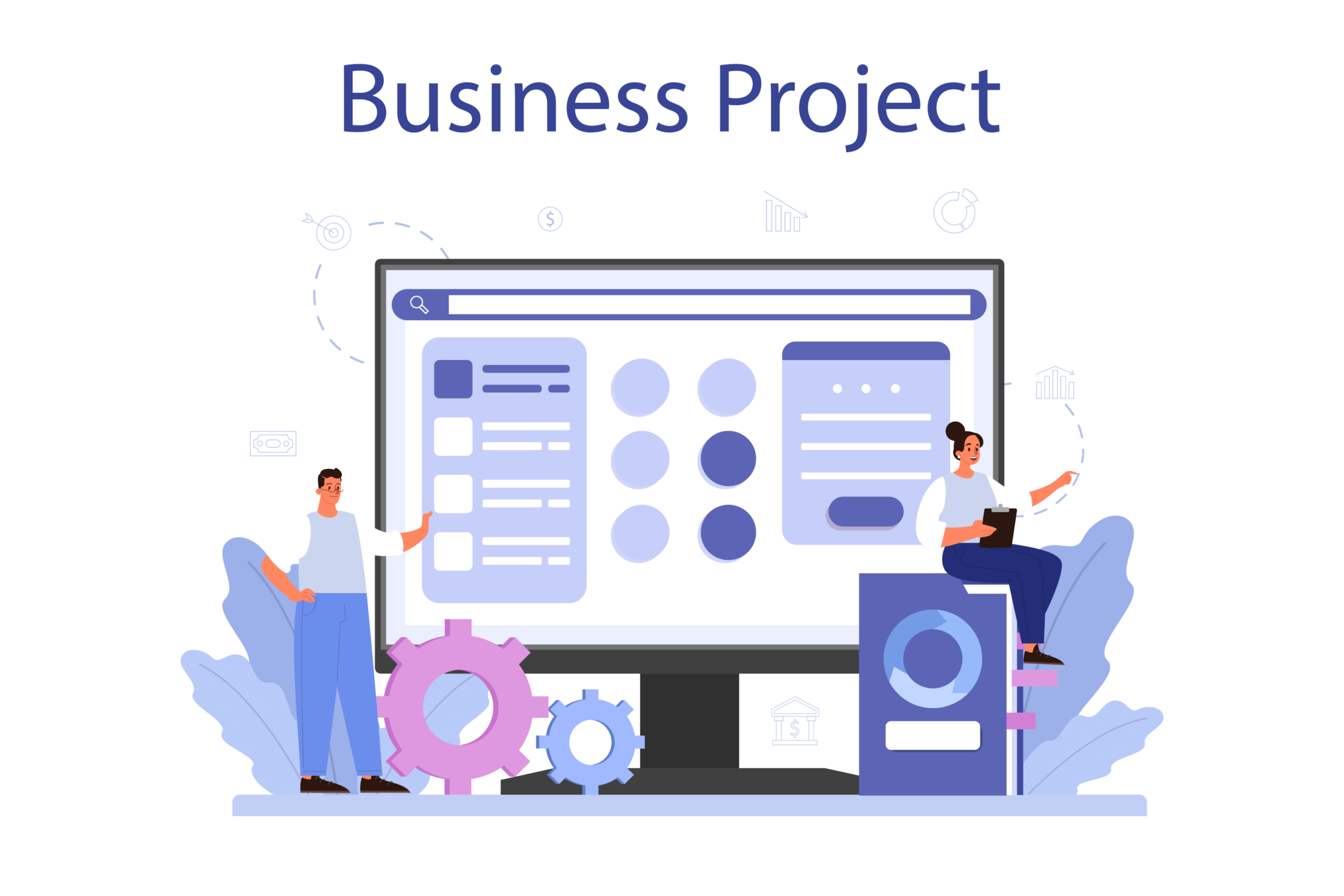In the fast-paced world of software development, Agile methodology has become the go-to approach for many organizations. One key aspect that drives the success of Agile is effective collaboration between business analysts and development teams. This collaboration is crucial as it not only fosters teamwork but also ensures that products are delivered efficiently, meeting the ever-changing demands of the market.

Understanding Agile Collaboration and Cross-Functional Teams
AI collaboration alludes to the smooth interaction and cooperation between diverse stakeholders involved in a specialized development project. It is recognized by transparent communication, flexibility, and the ability to quickly adapt to feedback and modifications.
These units are at the center of this clandestine collaboration. Comprised individuals from assorted departments, each contributing their distinct proficiencies and knowledge. This assortment empowers them to tackle intricate projects with effectiveness and ingenuity.
Nonetheless, overseeing such units comes with its share of difficulties. Managers frequently encounter the challenge of reconciling different viewpoints, managing workloads, and guaranteeing efficient communication between members.

Tenets for Successful Cross-Functional Teams
The success of cross-functional and other types of teams hinges on certain principles that foster a collaborative and productive environment.
Valuing Individuals over Processes and Tools
While processes and tools play a crucial role in streamlining workflows and ensuring efficiency, Agile project managers recognize that the true driving force behind successful projects is the collective talent and creativity of their team members.
In Agile, each individual’s unique strengths, ideas, and perspectives are highly valued, fostering a culture where everyone feels empowered to contribute their best work. By encouraging individual contributions and tapping into the diverse expertise of team members, teams can unlock innovative solutions and achieve better outcomes that go beyond what processes and tools alone can deliver.
Balancing Documentation and Actual Development
Agile methodologies advocate for “just enough” documentation, meaning that teams should aim for the right amount of documentation necessary to support development without overwhelming the process. While documentation is essential for clarity, traceability, and knowledge sharing, excessive paperwork can bog down teams and divert their focus from the primary goal of building the product.
Agile teams strike a balance by prioritizing working software and iterative development over exhaustive documentation. By focusing on tangible results and fostering a culture of continuous delivery, Agile groups and teams can maintain their creativity and productivity while ensuring that important information is effectively communicated.

Collaborating with Customers for Outside Perspectives
Customer feedback is a goldmine of insights that can significantly influence the success of a product. Agile teams actively seek customer collaboration throughout the development journey to understand their needs, pain points, and expectations better.
By involving customers early and frequently, teams can gain valuable outside perspectives that challenge assumptions, refine product requirements, and lead to more customer-centric solutions. This ongoing collaboration with customers allows Agile groups and teams to stay aligned with market demands and deliver products that genuinely resonate with end-users.
Embracing Flexibility and Openness to Change
In today’s fast-paced and dynamic business environment, change is inevitable. Agile groups and teams embrace this reality and remain flexible in their approach. They welcome change as an opportunity for improvement rather than resisting it as a disruption. By staying open to new insights and adjusting plans based on changing requirements or market conditions, Agile groups and teams can navigate challenges more effectively.
This adaptability enables them to respond swiftly to emerging opportunities and continuously enhance the product’s features and functionality. Embracing change as a core tenet of Agile allows teams to stay ahead of the curve and deliver products that meet evolving needs.

Best Practices for Agile Collaboration and Cross-Functional Teams
Scrum stands as one of the most sought-after Agile frameworks for cooperation. It cleverly breaks down the development process into concise iterations known as sprints, each spanning a few weeks. In the sprint planning phase, the team discerns the tasks to accomplish and crafts a backlog of prioritized items.
Within Agile collaboration, daily standup meetings hold a crucial role. These concise gatherings permit team members to exchange updates on progress, challenges, and daily plans. This practice bolsters communication and issue resolution, fostering a sense of solidarity among teammates.
However, it is vital for managers to resist the urge to excessively control the team. Instead, they should empower members to take ownership of their work while maintaining a balanced level of engagement.
Another powerful tactic for promoting information sharing among these types of teams is developing an open-source playbook. Serving as a project guidebook, this playbook meticulously documents processes, insights, and best practices. It cultivates interdisciplinary learning and streamlines collaboration.

Choosing the right digital tools for project management is crucial. These tools facilitate seamless communication, task tracking, and progress monitoring. Involving the team in the selection process ensures that the tools align with their needs and preferences.
Benefits of Agile Collaboration and Cross-Functional Teams
Agile collaboration and cross-functional teams offer several benefits to organizations and individuals alike.
Enhancing Efficiency and Performance
Agile collaboration enhances team efficiency and performance by leveraging the diverse skills and perspectives of team members. When individuals from different disciplines collaborate, they bring their unique expertise to problem-solving, enabling the team to tackle challenges more efficiently.
This collaboration also fosters a culture of continuous learning, where team members can acquire new skills and knowledge from their peers, ultimately leading to the delivery of high-quality products that meet customer expectations.
Breaking Down Silos
Silos within an organization refer to the isolation and lack of communication between different departments or teams. Agile collaboration actively works to break down these barriers by promoting all teams, particularly the cross-functional type that consists of members from various departments.
By bringing individuals with different backgrounds together, Agile encourages open communication and knowledge sharing. As a result, information flows freely across the organization, leading to a more cohesive and integrated work environment where everyone is aligned toward common goals.

Pinpointing Priority Tasks
Agile practices, such as sprint planning and backlog prioritization, help teams identify and focus on priority tasks. During sprint planning, the team collectively decides which tasks to take up in the upcoming sprint, ensuring that the most critical features are developed first. This approach allows organizations to allocate resources effectively, optimize project timelines, and deliver value to customers sooner.
Gaining a Competitive Edge
Agile development gives organizations a competitive edge in the market by enabling rapid iteration and delivery of products. The ability to adapt quickly to changing customer needs and market conditions allows Agile groups to stay ahead of their competitors.
Organizations that embrace Agile collaboration can deliver innovative solutions faster, responding to market demands and customer feedback promptly. This agility not only enhances customer satisfaction but also positions the organization as a market leader.
Enabling Continuous Improvement
Agile practices, such as iterative sprints and retrospectives, create an environment of continuous improvement. After each sprint, teams reflect on their performance, identifying areas of improvement and celebrating successes. This iterative approach to development allows teams to learn from their failures and build on their achievements, leading to constant growth and refinement of processes, products, and teamwork.

Adapting to Remote Work
The flexibility and adaptability of Agile collaboration make it well-suited for remote and hybrid work environments. Agile project management and teams can seamlessly adjust their communication and collaboration methods to function effectively, regardless of physical location.
Digital tools and video conferencing enable real-time communication, enabling team members to stay connected, share progress, and collaborate on tasks, even when working from different locations. This adaptability to remote work ensures that productivity and teamwork remain unaffected by geographical constraints.
Case Study: LaunchDarkly & Shortcut
Let’s take a closer look at two companies, LaunchDarkly and Shortcut, known for their agility and successful collaboration.
LaunchDarkly is a feature project management platform that enables software teams to build better software faster. They employ Agile practices to collaborate efficiently and deliver top-notch features to their clients.
The shortcut is a modern Agile project management tool that helps teams plan, track, and release great software. They prioritize collaboration and provide features that support the cross-functional type of team.
The collaboration between LaunchDarkly and Shortcut exemplifies the benefits of Agile collaboration and cross-functional teams. By using Shortcut’s toolset, LaunchDarkly enhances team efficiency, flexibility, and overall productivity. We encourage readers to explore Shortcut’s free trial to experience the power of Agile collaboration firsthand.
15 Game-Changing Agile Collaboration Team Techniques

Agile Teams: Mission-Driven Collaboration: Agile teams go beyond being regular teams; they share a common mission and purpose. With a clear understanding of their collective goals, they collaborate harmoniously to achieve them. This shared sense of purpose fuels their dedication and enthusiasm, leading to a strong commitment to delivering valuable products to customers.
Building Trust for Successful Collaboration: The foundation of effective collaboration is trust. Team members must trust each other’s skills, intentions, and commitments. When trust exists, individuals feel safe to express ideas, take risks, and collaborate openly without fear of judgment.
Establishing Agile Team Working Agreements: Agile groups define a set of norms and guidelines through a working agreement. This document outlines how team members will interact, communicate, and resolve conflicts. A well-established working agreement fosters a positive team culture and ensures alignment with the team’s values and principles.
Empowering Team Autonomy: Agile thrives when teams have the freedom to make decisions and take ownership of their work. Encouraging team autonomy empowers individuals to be creative, innovative, and self-organizing, resulting in increased productivity and satisfaction.
Maintaining a Prioritized Product Backlog: A product backlog is a prioritized list of tasks and features for the team to work on. It ensures clarity on what needs to be done and in what order. A well-maintained backlog helps the team stay focused and work efficiently.
Creating a Supportive Workplace: A comfortable workplace contributes to a positive and motivated team. This includes physical comfort, such as ergonomic workstations, as well as emotional comfort, where team members feel safe to express themselves and share ideas without judgment.
Effective Onboarding Process: A well-designed onboarding process is crucial for integrating new team members. Effective onboarding helps them understand the team’s dynamics, goals, and processes, enabling them to contribute effectively from the start.
Prioritizing Effective Communication: Face-to-face communication fosters better understanding and minimizes misinterpretations that can occur in written communication. While remote work is common, in-person or video meetings can enhance team communication.
Focus on Execution and Feedback: Agile collaboration prioritizes delivering working products over extensive documentation. Teams should focus on executing tasks, iterating, and receiving feedback promptly. This approach leads to rapid progress and tangible results.
Embracing an Experimental Mindset: Agile groups embrace a culture of experimentation. When faced with challenges, they try out different solutions through small experiments. This iterative problem-solving approach enables them to learn from failures and find the best solutions.
Embracing Change and Evolving Communication: Agile groups understand that change is inevitable and embrace it instead of resisting it. They continuously adapt their processes and communication to meet evolving requirements and challenges.
Supporting Virtual Agile Team Collaboration: As remote work becomes more prevalent, Agile groups adapt to virtual collaboration. Utilizing digital tools, video conferencing, and collaborative platforms allows teams to maintain effective communication and collaboration.
Breaking Down Silos for Better Communication: Silos within teams or departments can hinder collaboration and communication. Agile groups break down these barriers and foster constant communication across the organization, ensuring everyone is aware of progress and challenges.
Making Agile Collaboration Engaging with Team Games: Agile collaboration can be made engaging and fun through team games and exercises. These activities encourage creativity, problem-solving, and team bonding, leading to improved collaboration and teamwork.
Utilizing Agile Dashboards for Transparency: Agile dashboards provide a visual representation of the team’s progress, backlog, and performance metrics. They enable transparency and facilitate data-driven decision-making for continuous improvement.

By implementing these 15 game-changing Agile collaboration team techniques, teams can create a collaborative, innovative, and productive environment. These practices not only improve the development process but also enhance team satisfaction and customer outcomes. Remember, Agile collaboration is not just a set of practices; it’s a mindset that drives success in the ever-changing world of software development.
Conclusion
In conclusion, Agile collaboration between business analysts and development teams is vital for success in the dynamic world of software development. By embracing the principles of Agile and forming cross-functional teams, organizations can enhance efficiency, innovation, and communication.
Effective collaboration leads to a productive and cohesive team, making the right decisions, delivering quality products, and delighting customers. Managers must foster an agile and collaborative culture, emphasizing teamwork, adaptability, and the selection of appropriate tools to facilitate the development process.
FAQs
How do you collaborate in Agile?
In Agile, collaboration is at the core of the development process. Agile agents and teams collaborate in several ways:
Daily Standup Meetings: Team members gather daily to discuss progress, challenges, and plans for the day.
Sprint Planning: Collaborative sessions where the team decides on the work to be done in the upcoming sprint.
Retrospectives: After each sprint, the team reflects on their performance and discusses ways to improve.
Pair Programming: Two developers work together on the same code, fostering real-time collaboration and knowledge sharing.
Customer Collaboration: Regularly involving customers and stakeholders for feedback and insights.
What is an example of collaboration in Agile?
An example of collaboration in Agile is during Sprint Planning. During this meeting, team members from different disciplines, such as developers, testers, and business analysts, come together to review the product backlog.
They discuss the prioritized user stories and collectively decide on the work to be taken up in the next sprint. This collaborative effort ensures that everyone is on the same page, and the team commits to delivering a valuable increment of the product.
What are the 4 pillars of Agile?
The 4 pillars of Agile are the foundational values outlined in the Agile Manifesto:
Individuals and interactions over processes and tools: Focusing on the people involved and their effective communication rather than rigid processes or tools.
Working software over comprehensive documentation: Prioritizing delivering a functional product over excessive documentation.
Customer collaboration over contract negotiation: Encouraging active involvement of customers in the development process and being responsive to their needs.
Responding to change over following a plan: Embracing change and adaptability to evolving requirements rather than strictly adhering to fixed plans.
Does Agile focus on collaboration?
Yes, collaboration is a fundamental aspect of Agile. Agile methodologies emphasize the importance of open communication, teamwork, and collective decision-making. Agile recognizes that collaboration between team members and stakeholders is essential to deliver valuable products effectively. The Agile Manifesto explicitly values “Individuals and interactions” over “Processes and tools,” highlighting the central role of collaboration in the Agile approach.



